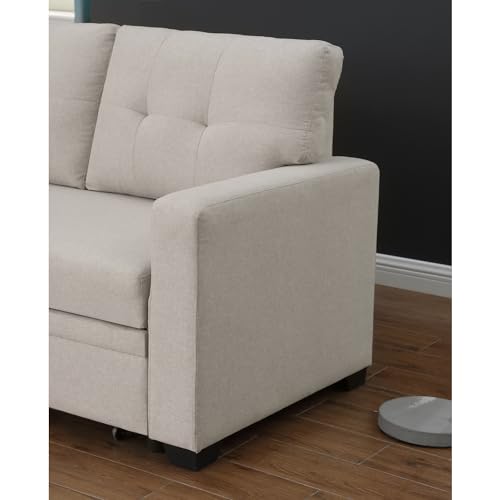
Comfortable Couch
FollowOverview
-
Founded Date October 23, 2021
-
Sectors Construction / Facilities
-
Posted Jobs 0
-
Viewed 3
Company Description
3 Common Causes For Why Your Leather Couches Isn’t Working (And The Best Ways To Fix It)
The Ultimate Guide to Leather Couches: Style, Maintenance, and FAQs
When it comes to furniture, few pieces can match the timeless elegance and toughness of leather couches. Understood for their stylish appearance and long-lasting quality, leather couches have taken a substantial place in modern homes. Whether you are refurnishing your living space or purchasing your first couch, understanding the ins and outs of leather upholstery can significantly influence your decision. In this guide, we will check out the various kinds of leather, maintenance ideas, benefits and disadvantages, and respond to often asked questions.
Types of Leather Used in Couches
Before diving into upkeep and care ideas, it is essential to understand the different kinds of leather used in couches. Here’s a relative table for fast referral:
| Type of Leather | Description | Toughness | Rate Range |
|---|---|---|---|
| Full Grain | Made from the leading layer of the hide; keeps natural grain and flaws. | Extremely durable | ₤ ₤ ₤ ₤ |
| Top Grain | Made from the upper layer but sanded and Comfortable Couches treated for a smoother surface. | Very durable | ₤ ₤ ₤ |
| Corrected Grain | Rubbed and artificially embossed; frequently colored for consistent look. | Reasonably durable | ₤ ₤ |
| Bonded Leather | Made from leftover leather scraps and bonded with polyurethane. | Least durable | ₤ |
| Nubuck | Sanded and brushed to develop a soft texture; can be vulnerable to stains. | Moderate sturdiness | ₤ ₤ ₤ |
Advantages of Leather Couches
-
Durability: Leather is notoriously durable. It withstands wear and tear better than fabric options, making it ideal for homes with kids and family pets.
-
Easy to Clean: Spills can be rubbed out quickly, and regular cleaning maintains its appearance.
-
Classic Style: Leather immediately elevates a room’s aesthetic and provides an air of sophistication.
-
Convenience: Leather adapts to body temperature level, making it most comfortable sectional couch comfortable affordable couches affordable couch [https://talentrendezvous.com] in both summer season and winter.
-
Hypoallergenic: Unlike fabric couches that can trap dust and allergens, leather surface areas are simpler to keep tidy.
Downsides of Leather Couches
-
Cost: Leather couches tend to be more pricey than their fabric equivalents.
-
Upkeep: While simple to clean, leather needs routine conditioning to avoid cracking and fading.
-
Temperature Sensitivity: Leather can end up being hot in summertime and cold in winter season, which some may find uncomfortable.
-
Scratches and Scuffs: Although durable, leather can still be scratched or scuffed, possibly impacting its appearance.
-
Less Variety: Leather color and Comfy Leather couch patterns may not use the exact same variety as fabric options.
Maintenance Tips for Leather Couches
Appropriate maintenance is essential to lengthen the life and appearance of a leather couch. Here is a list of essential maintenance ideas:
-
Regular Cleaning: Use a soft fabric to dust the surface area weekly. A vacuum fitted with a soft brush accessory can help reach crevices.
-
Avoid Direct Sunlight: Position your couch away from direct sunlight to avoid fading.
-
Use Leather Cleaner: Clean your couch every 6-12 months with a specifically created leather cleaner to preserve its surface.
-
Conditioning: Apply a leather conditioner a minimum of twice a year, which helps keep the material flexible and minimizes the danger of cracking.
-
Address Stains Immediately: For spills, blot the area with a dry fabric. Avoid rubbing to prevent spreading out the stain further.
-
Prevent Harsh Chemicals: Never use routine family cleaners, as many consist of solvents that can harm leather.
-
Turn Cushions: If your couch has removable cushions, turn them routinely to ensure even wear.
FAQs About Leather Couches
Q1: How can I inform if a leather couch is high-quality?
A1: High-quality leather chairs are usually made from full-grain or top-grain leather. Examine for a consistent feel and odor; authentic leather will have natural variations.
Q2: Can leather couches be repaired?
A2: Yes, minor scratches and scuffs can be fixed utilizing leather repair work kits. For substantial damage, it’s a good idea to speak with a professional.
Q3: Are leather couches a wise financial investment?
A3: Yes, due to their resilience and durability, leather couches can be an excellent investment. With appropriate care, they can last decades, even surpassing the life expectancy of fabric couches.
Q4: Do leather couches breathe?
A4: Yes, leather has a natural breathability due to its permeable structure, which permits it to get used to your body temperature.
Q5: Is it ethical to buy leather upholstery?
A5: The ethics of purchasing leather depend on sourcing. Try to find brands that focus on gentle animal treatment and sustainable practices in their leather production.
Leather couches use an unsurpassable mix of design, convenience, and resilience. They can change a space and act as a long-lasting financial investment in your home. With the proper understanding of types, maintenance requirements, and the pros and cons of leather upholstery, prospective buyers can make educated decisions that match their requirements. Whether you go with a timeless brown leather big comfy sofa or a modern black one, the beauty and sophistication of leather furniture will boost any interior setting.



